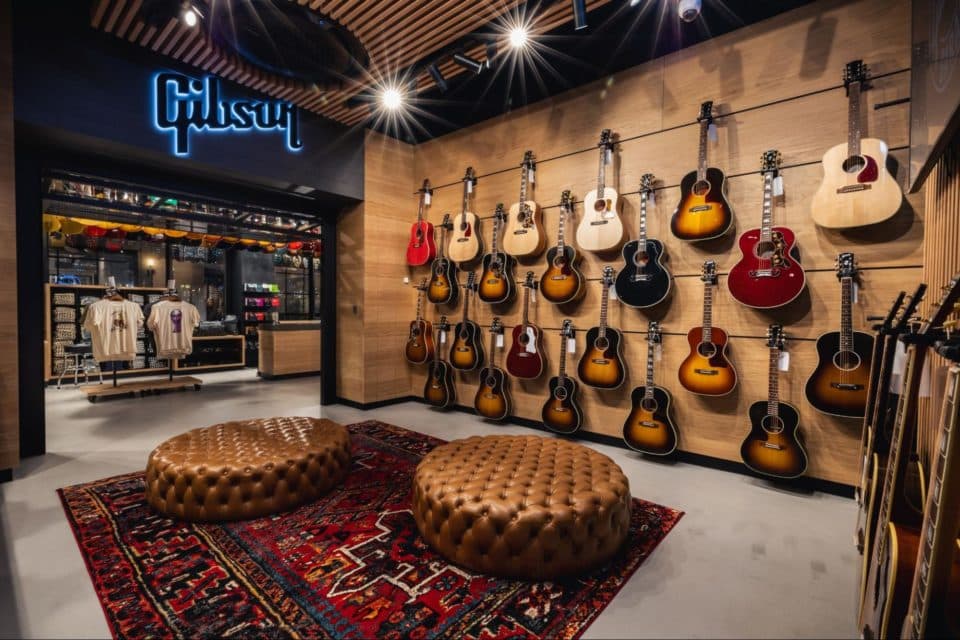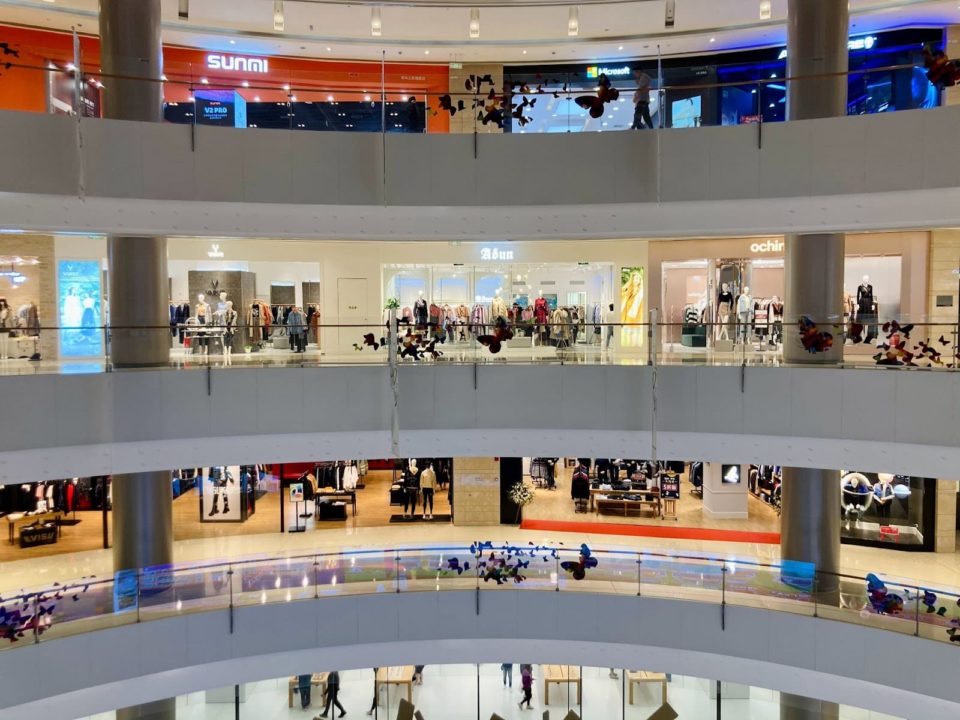Omnifi’s Simon Liss talks IoT, Physical Web and ‘thin-layer’ in-store tech solutions
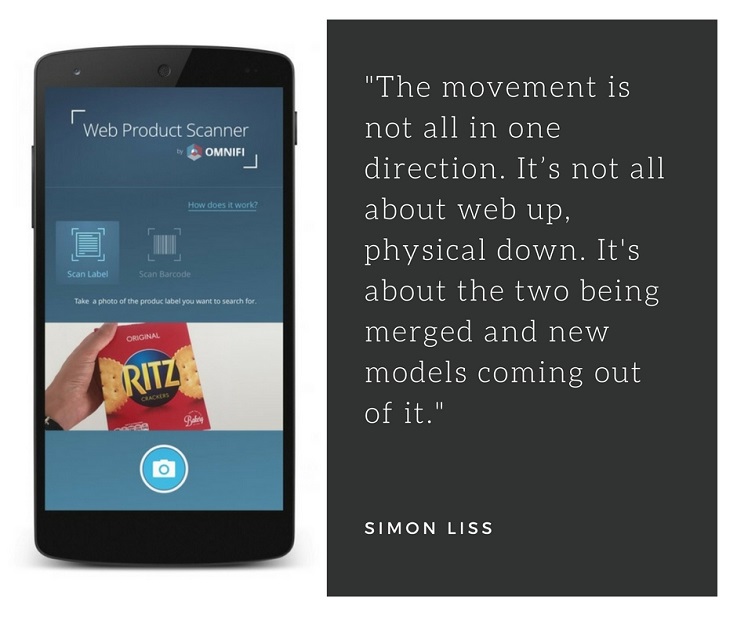
In their own words, Omnifi are “independent in-store innovators”. Using clever new technologies like Internet of Things (IoT), sensors and Physical Web beacons, the company helps physical retailers solve store challenges and offer better shopping experiences.
Delivering this can include anything from strategy to technical build and design and leveraging in-house innovations, but every project starts with the challenge. This means any chosen tech directly addresses the issue and has been considered from a customer experience or ROI perspective. Omnifi may only have started life in early 2014, but this approach has already seen it working with big name brands such as B&Q, Thomson Holiday, Chiquito and Frankie & Benny’s.
Founding partner and top strategy and innovation guy Simon Liss gives us the lowdown on Omnifi’s new developments, the applications for tech in retail stores and why we should be thinking ‘thin-layer’
Can you tell me what Omnifi does in a way that my grandmother would understand?
Omnifi makes things on mobile phones and screens that make shopping easier for people when they go into real shops.
The Physical Web and IoT
Can you tell me which of your recent projects are the most innovative or future-focused and why?
We have a mix of projects – some are things that are live with clients and there are other projects that are more experimental or more internal – we have an R&D function within the company that we call Labs. For me this year the most innovative stuff we’ve done is concept work for B&Q where we looked at how we could deliver content over the in-store Wi-Fi that would link people from on-shelf products to online content.
We built a product off the back of that called our Web Scanner. The Web Scanner is using web technology to scan bar codes on physical products, and that for me is the most innovative thing we’ve built and taken to market this year.
The other thing that I’m excited about is the Physical Web stuff that we have started to look at using Google’s new Eddystone format, which allows beacons to transmit URLs. Physical Web beacons are like normal beacons, except they have an extra piece of functionality and that functionality is a URL transmission feature.
Standard beacons can interact with a specific app on your phone. However a Physical Web beacon that’s transmitting a URL can interact with any phone that’s set up to interact with those beacons, and it’s not app specific.
Can you tell me more about the applications that you see coming for the Physical Web?
Physical Web is an umbrella term for URLs and web content that’s associated with physical locations – it is a way for us to create location-based web content. In the future, I can see that every store is going to have its own Physical Web beacons in store and it might even have a range of Physical Web beacons, all pointing customers to content that makes their in-store journey easier.
As an example – you walk into a DIY shop and have a Physical Web beacon that’s transmitting a link to the website. It could also have a Physical Web beacon that’s transmitting you a link to an AI customer service bot that’s on hand to deal with any questions you might have if a real member of staff is not around. It could also have a Physical Web beacon that’s actually just giving you a map of the store and telling you about what the special offers are.
I think that Physical Web beacons are going to replace retailer apps eventually. They’re going to be the thing that rather than requiring customers to have apps preloaded on their phones to interact with physical stores, they are going to be able to walk in, open up their phone, and the content is going to be there pushed at them or available for them to pull down.
They’ll replace all the other things that haven’t really worked in delivering content to people in-store including Wi-Fi. The Physical Web, once it gets out there and embedded and gets a bit more knowledge around it, is I think in the next two years is going to be a lot more ubiquitous and will solve a lot of these challenges we have over trying to link between online and offline in physical stores.
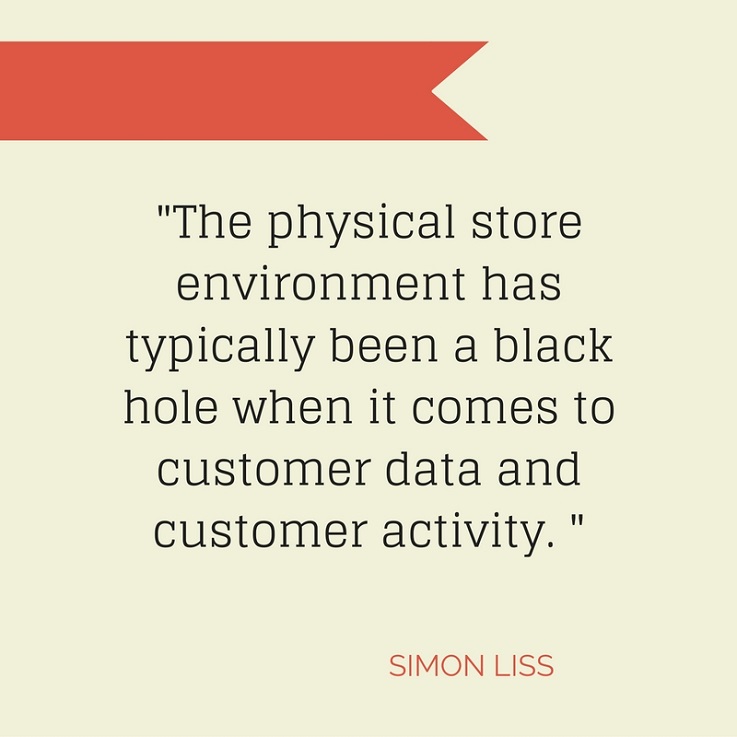
Why do you think beacons haven’t really taken off yet?
Beacon technology has a huge user experience barrier in that you need to have an applicable app installed on your phone, and it’s not just any app to interact with any beacons, it needs to be a specific app designed for the specific beacons that’s installed in that specific retailer.
So if you don’t have a retailer’s app on your phone, you’re not going to be able to interact with that beacon. There’s no generic beacon app, so unlike you could get a QR code reader on your phone and you could read any QR codes, or a bar code reader and read any bar codes, you can’t get a beacon app and interact with any beacon.
All beacons trigger things within a specific app, so your Argos app, your B&Q app, whatever app, can only speak to beacons that have been assigned to that app by that brand or that retailer. They’ve never taken off because actually retail apps have never taken off, and that the two are completely co-dependent. You can’t have one without the other.
There are lots of other barriers to beacons working because you need to have Bluetooth on, and you need to accept push messaging as well in a lot of circumstances. But the main one is that you simply do not have enough penetration in individual retailer’s apps in the general population to make interaction with beacons anything that’s going to happen on a big scale.
Physical Web has the capacity to break this down assuming that you use Chrome and you’ve turned the feature on. Google is slowly taking away the barriers to this. It used to be that you used to have to turn Physical Web on, on your phone. In the latest release, they’ve taken that requirement out. All you have to have now is a compatible version of Chrome and have location turned on and your Bluetooth turned on to receive nearby notifications.
I know that that they think this is going to be something they are going to want to push, and quite frankly they’re in control of their devices and OS-level stuff. Like with any technology, nobody knows whether it’s really going to take off, but I think the signs are good on this one in that it’s fulfilling a real need and the bridging of the digital/physical gap is simply not going to happen with apps. It has to be web-based for reach.
Can you tell me about your IoT and sensor projects? Where are you trying to take those?
We’re looking at radio frequency-based sensors. A lot of sensors rely on Bluetooth and a lot of power, we’re looking at micro-sensors in stores that could run off radio frequency, which means it’s a lower power way of sending and receiving data, which means that they could stay in place for a number of years without needing to have batteries replaced. These sensors will do the sort of things that Bluetooth sensors might do – they might sense how long people stay in front of displays, they might sense the things that are being picked up. That’s another early innovation that we’ve not cracked yet, but we’re working on, which I think is exciting.
All of that is around trying to make physical retail environments as measurable and as responsive as websites. On a website we can recognise users, and we can also measure and track exactly what a user does on the website down to where they move their mouse, what they click on, what they put in their basket, etc. That kind of granularity in terms of analytics and visitor measurements and performance tracking and the optimisation that then allows you to do off the back of that is completely lacking in physical store environments.
The physical store environment has typically been a black hole when it comes to customer data and customer activity. You’ve got very basic measurement techniques in most shops. You’ve got infrared footfall counter, which for the most part inaccurately counts footfall in-and-out but doesn’t count repeat or loyalty or anything like that and doesn’t count anybody walking outside.
Then the other main bit of data is till data. That can only tell you what people have bought, and for the most part, unless you’ve got a loyalty card, can only tell you what everybody’s bought. It doesn’t really give you an individual’s buying patterns either.
Stores are very dumb when it comes to understanding what’s being bought, why it’s being bought, how it’s being bought, and who’s doing it. Sensors are part of a package of things that can bring store analytics to life. A sensor can sense people’s dwell time in front of merchandise. It can work out the effectiveness of this visual merchandising, they can work out how often things are picked up and put down. Proximity sensors can work out the height of people. It can work out the profile of men, women, and children. It can do all these things, which combined with other sensors such as Wi-Fi and video cameras can give you a really good granular feel of what is happening in the store. Once you can measure what’s happening, then in theory you should be able to improve what’s happening as well.
You can sort out dead spots in the floor plan. You can work out if a product is not being picked up, or sat on, or moved around, then it’s probably not that popular and you can relegate it to the back of the shop or eventually to the warehouse. The idea is that small micro-sensors that work on very low power are cheap enough and durable enough to be put into a shop and used in that way.
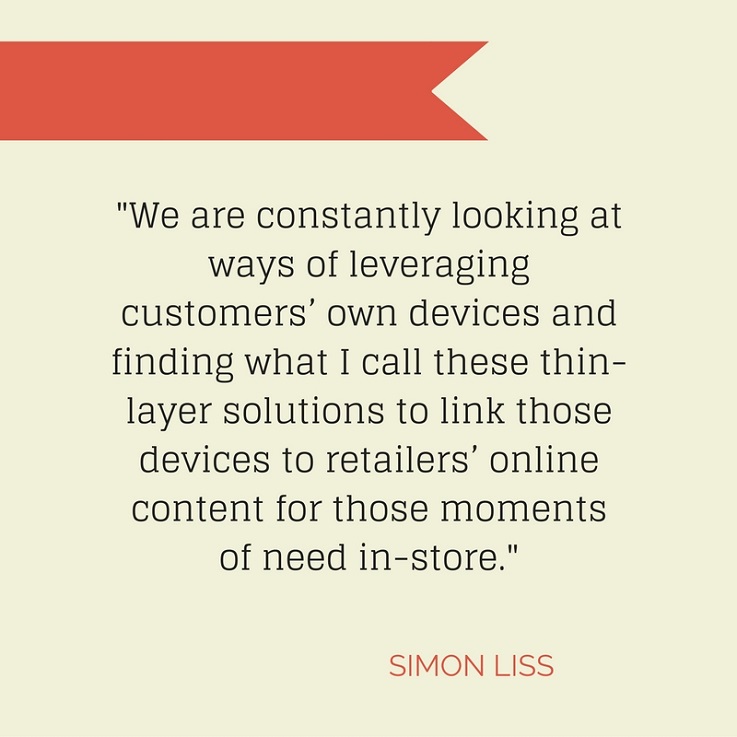
The opportunity of thin-layer solutions
Who are you working on these types of projects with?
We’re talking Physical Web with a couple of big FMCG brands right now. Their reticence is based around that they want to innovate, but with lots of these things retail is reluctant to take risks. They want to take calculated risks, so it’s not pure innovation, not like R&D. They want to try stuff out that they think might have a chance of working although they’re prepared for quite low engagement rates to start off with.
What is missing from a lot of shopper journeys right now is the link between all the features that they can get online from the comfort of their own phone or home, and then what’s actually available to them when they go into a store. Is that for the shop to provide or is that actually something now the customer can provide for themselves by their own device?
I increasingly think that a lot of the things that a customer wants to do like share with friends, they’ll just do through their own channels. But actually when it comes to delivering moment of decision content such as reviews, more information, or maybe another size online, I think that’s for the retailer to facilitate. It’s what I call thin-layer solutions. So it’s a thin layer of innovative technology that takes somebody from standing in a store not knowing whether to buy something and linking them to online content that the retailer has already developed to help people make online decisions. But you bring that content in-store, so they can make that decision there and then.
The trick is to try and do that in a very easy way that requires very little less effort on behalf of the customer, and should be at a minimal cost to the retailer, because the classic way to try and do that is to put kiosks or screens all over the place. But for most of our clients, that’s simply too expensive and not scalable. We are constantly looking at ways of leveraging customers’ own devices and finding what I call these thin-layer solutions to link those devices to retailers’ online content for those moments of need in-store.
What is the ROI for those types of solutions?
In terms of commercial approach and potential ROI, if the store is looking at developing new digital tools and new digital platforms, it’s a lot cheaper to use customers’ own devices than it is to use screens that they have to build, maintain, and install and service themselves. That’s just a no-brainer.
The capital expenditure is zero on customers’ own devices, which they service, maintain, and pay for themselves. It also makes sense to leverage existing sunk investment in your websites and your in-store networks. For me, if you want to set out a commercial case for thin layer, that’s it. It’s infinitely more scalable and cheaper than developing massive touchscreen experiences.
What is your view on the relationship between online and offline retail?
I think that people forget that brands often still need to be discovered and found, and whether that’s in somebody’s home, on the street, in a TV advert, but often actually they’re found by walking into a shop and looking at the things. Even if that sale is not concluded in a physical store, the physical store and physical product set in the right kind of environment still has huge impact.
I also think people are still struggling with the idea that online is going to be harder. Even with the advent of virtual augmented reality, satisfying all the human senses, and all the emotional cues, and all the psychological cues that drive people to favour one brand over another or make an emotionally-driven buying decision is really hard to achieve online.
Some people say that online there’s a distance between the object of your desire and you. You cannot touch it, you cannot smell it, you cannot feel it, whereas in a shop you’re very close to the object of your desire. It is also in a shop and there is context to that, whereas on a website, there is not – it’s just another website. The converse of that is actually the distance from you and say these new headphones or a T-shirt that’s being sold by a company in Sweden is actually reduced when you are online because otherwise you’d have to go to Sweden to find it or go to the factory where these are made to experience it.
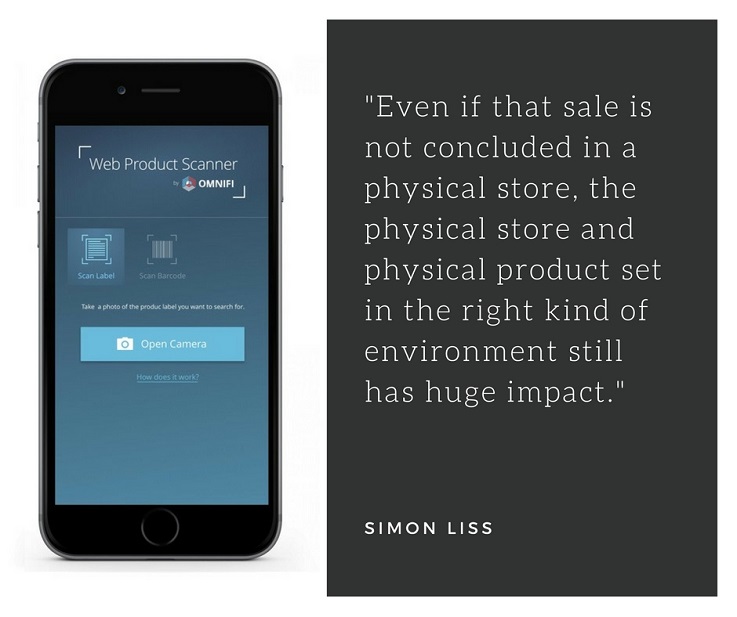
Connected customer journeys
Do you think that traditional retailers who are connecting some of their spaces are doing enough to survive?
One of the reasons it’s difficult to answer that question is it’s utterly brand and vertical dependent, as in where you start off as a retail business and what you’re selling. If you were to say, “I’m going to start off with a whole new product and I’m going to decide which way to sell it,” if you didn’t already have a network of stores, you may never open a store. You cannot freeze a moment in time and say this is how we should sell.
Legacy retailers are dealing with staff and physical shops, that’s their base and for them to pivot to be pure play online is very difficult. They’re trying to make the best of their sunk investment and their estates. Pure online players are starting from a different point of view and actually when they move into physical stores, they bring a whole different sensibility to the physical retail space. They don’t have to worry about those physical retail spaces being cash positive in terms of P&L to start off with. They can be brand beacons and they can actually be a loss leader when it comes to their entire retail network. Physical retailers find it much harder to do that.
One of the challenges for stores is to attribute sales properly across their different channels and many of them can’t do that. So until you’re able to do that, it’s very difficult to actually place a value on a physical store.
If you think the value is around marketing, but the sale is concluded outside of that store, then that’s even more reason to try and make that store as measurable as the website because if not how are you going to know how big to have that store, what to put in that store? How do you trace that customer journey?
People with physical retail outlets who are multichannel actually seem to be thriving. If you look at some of the most successful retailers in the UK, they’re actually multichannel retailers and many of them come from a physical retail background. People can form brand loyalty and can understand a brand, and can engage with their products from purely online basis, but there is a position of strength to be had if you have a physical presence. You’re somehow more trusted and people can see you, and there’s more gravity to you as a brand I think if you are available across multiple channels.
There’s also something very practical about being able to go into a store. The multichannel working properly means you can leverage the fact that a multichannel retailer has a physical store because you can go in and try that thing on, you can go in and return that item, etc. With a pure online retailer you can’t necessarily do that.
Online pure players such as Amazon are also now moving into physical though. Amazon started out as a pure online retailer, it now has Echo and Dash, which are physical manifestations of their online model. It is now selling through two channels and actually now it’s selling through three because Amazon has also started to open up a network of pop-up stores to sell its electronic products. A hundred of those are being opened up in the States and also recently started to open up convenience stores to help promote its grocery service.
This is a pure online player that now has one hybrid physical distribution channel, which is Echo and Dash, and one traditional physical distribution channel, which is physical retail. So you can see that the movement is not all in one direction. It’s not all about web up, physical down. It’s about the two being merged and new models coming out of it.
Do you have a view on when the first brand will truly get a single view of the customer journey?
I think it’s difficult because you’re going to have to have every touchpoint be connected and measurable. If we stop reading paper magazines and it’s all e-books and when you pick something up, the book knows it’s you reading it and it knows how long you spent on a certain page and it can track your eye movements, then we’ll certainly have a better idea, but it’s a long way off.
We can probably see who’s looked at a retailer’s adverts on TV, identify them when they shop online, and increasingly identify them when they shop in-store. It’s all possible. Being able to track and measure people across all channels as they go through their shopping journey the ultimate in customer analytics – it’s some way off.<ifro
The flipside to all of this great insight for shops as we slowly penetrate data and customer ID into the physical world, is that there may be pushback from customers who actually just want to walk around and do it anonymously.
Are there any brands that really inspire you or that you think are leading the way in terms of retail?
I think in terms of a brand that’s leveraging technology, I do still think that Argos is doing something really good in that they are removing the barriers to purchase and they’re leveraging their network. You would have thought that business, essentially a catalogue business, was dead in the water. But what they’ve done is they’ve managed to turn themselves around and taken what was a legacy business and that store network and they’ve aligned it with an online platform.
I can go on to the Argos website now. All I have to give them is my mobile number and I can reserve goods to be picked up in the network. Not only can you now pick up their goods there, you can also pick up your eBay goods there. Now they’re embedded in Sainsbury stores as well because of the commercial deal there. They now have a durable multichannel, omnichannel, forward-facing brand. It’s not a fashionable brand. It’s a mass-market brand that’sembraced a very functional version of omnichannel. So I’ve been impressed by them.
We worked with B&Q earlier this year, and I’m very impressed with how they’ve turned that into a properly multichannel business. Nowadays B&Q have a view of stock across their entire estate, whether it’s in their warehouses or in their stores, and they have a view of that stock down to shelf and aisle level and can even geolocate it.
Once you have that, the customer-facing experiences you can layer on top of that become very exciting. A business like that has understood that it’s a long slog to get from a legacy physical retail business to a true omnichannel business and they put the investment in. They know now that apps aren’t the be-all and end-all, they know now to ignore things that don’t fit in with that vision and that long-term strategic planning and execution is huge.
The other brand is actually Google. Google is not a retail brand as such, but Google has understood the importance of the mobile and location in the shopper journey. They are now putting in and developing the tools to allow physical retail to be discovered by mobile, and even physical products to be listed and seen by a mobile device. They’re putting in platforms to allow retailers to advertise to people with local search intent and measure footfall going into their stores.
They’re not a retail brand, but they’ve understood the importance of physical retail even though they come from an online world, and they’re slowly putting in place the kind of tools which will really bring to life online to offline. Google is leveraging its network, and all its technology and its device integration to move you from an online search into a physical store.
Are there any brands that you feel are not living up to their potential?
I feel that mobile phone shops and network operators who naturally should understand the power of digital, their retail model is still pretty Stone Age. For the most part they are actually key to people’s mobile lives and they’re still acting like dumb data pipes. They could add a lot more value to people’s lives and their retail network should be places where you actually go to discover and learn more about the possibilities of digital, digital homes, your digital life, even digital entrepreneurship.
I don’t think anybody actually really needs to handle a phone before they buy them anymore. Everywhere knows what a phone feels like and looks like. What they could do is go in and experience something new, go in and be shown a new way to use their phone. I feel that is a whole vertical that is crying out for innovation and that their very being is all about data and all about new technology, but the showrooms are worse than the worst kind of retail – products you can’t use in an environment, which is completely sales driven in prime high street locations. They have a backward way of selling the product of the future.
Video and product pictures courtesy of Omnifi
Want to quickly and easily connect with the players kick-starting trends and inventing the future of retail? Find out how you can transform your team’s thinking using Insider Trends’ little black book here.

